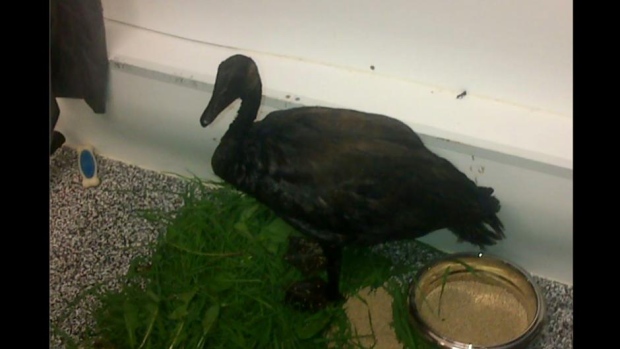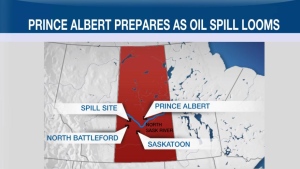Jul 25, 2016
Why there’s zero tolerance for oil-soaked wildlife in Canada

ANALYSIS: Absolute zero has become the highest level of risk some Canadians seem willing to accept when it comes to pipelines.
The Canadian Energy Pipeline Association trumpets the industry’s safety record, noting there were 122 “spills and releases” in 2014, while 99.999 per cent of all shipments were delivered safely. Nonetheless, even when pipeline operators go to the greatest possible lengths in terms of response and disclosure when spills do occur, no level of effort is considered enough, especially if the health of even one member of the local wildlife is put at risk.
That has clearly become the case for Husky Energy, which spilled 1,570 barrels of diluted heavy oil into the North Saskatchewan River from a burst pipeline late last week. The company initially earned praise from an official with the provincial environment ministry for being “really diligent” in its efforts to keep the spill from flowing downstream toward communities reliant on the river for drinking water.
Yet over the weekend, as the cities of North Battleford and Prince Albert were forced to find alternate sources of drinking water and three crude-covered birds – a sparrow, a Canada goose and a great blue heron – were found at the spill site with the sparrow having died, the praise for Husky quickly disappeared. According to an analysis of all tweets sent at 10:13 a.m. ET on Monday containing the words “Husky” and “spill”, almost all of them also contained either “birds”, “drenched” or both.
Husky sent its first-ever tweet on Sunday as part of its broader disclosure strategy, but when CEO Asim Ghosh was asked about the public perception issues related to the spill during the company’s second-quarter earnings call on Friday, he suggested the Canadian public was not as concerned as the news coverage implied.
“I distinguish between the media reaction and the public reaction,” Ghosh said in response to questioning from BNN. “As far as we are concerned we are just focused on getting on with the job. If we have a pipeline spill we address the pipeline spill.”
Recent history has not been kind to companies responsible for spills.
Last month, when ConocoPhillips spilled roughly 2,400 barrels worth of light petroleum into a northwestern Alberta creek, the company went to extraordinary lengths to ensure the public was aware of even the most minor of actions being taken; in one update dated June 15th, Conoco said it had “relocated one toad as a preventative measure.” However, the proximity of the spill to an endangered caribou and grizzly bear habitat became the focus of public concern.
Last year, when a pipeline owned by the Chinese government – through the Canadian subsidiary of the China National Offshore Petroleum Corporation – spilled more than 31,000 barrels of petroleum products south of Fort McMurray, Alberta, the most visceral public reaction was arguably over a single duck found dead at the spill site. The news evoked memories of an infamous 2008 incident when more than 1,600 ducks were killed after landing in a Syncrude tailings pond.
 In terms of volume, the latest Husky spill is less than one tenth the size of the 20,000 barrels that spilled from an Enbridge pipeline into Michigan’s Kalamazoo River in 2010. Before the wildlife and drinking water consequences were fully known, anti-pipeline activists had already seized on news of the Husky spill as a reason not to build new pipelines such as TransCanada’s proposed $15-billion Energy East project.
In terms of volume, the latest Husky spill is less than one tenth the size of the 20,000 barrels that spilled from an Enbridge pipeline into Michigan’s Kalamazoo River in 2010. Before the wildlife and drinking water consequences were fully known, anti-pipeline activists had already seized on news of the Husky spill as a reason not to build new pipelines such as TransCanada’s proposed $15-billion Energy East project.
“If built, Energy East would transport tar sands oil across nearly 3,000 rivers, streams and lakes from Alberta to New Brunswick,” Patrick DeRochie of Environmental Defense said in a release issued midday Friday. “The 4,600 km export pipeline would put the drinking water of over 5 million Canadians at risk.”
The Husky spill comes as a newly appointed federal panel weighs whether to accept or reject the National Energy Board’s recommendation to approve plans to triple the capacity of Kinder Morgan’s Edmonton-to-Vancouver Trans Mountain pipeline. Since the panel is charged with weighing the broader environmental consequences of the project, news of injured wildlife and threatened drinking water supplies creates another challenge for the controversial project.
Everything in life carries some level of risk, but as far as the new pipelines being proposed to carry Canadian crude are concerned, some segments of the Canadian public seem increasingly willing to accept none.




